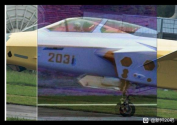Yang Wei did mention that a whole family of them will emerge. Not surprised if they have like 8 different variants.
Even already, in terms of J-20 variants that have seen production or likely to see production, we have:
- original J-20A powered by Al-31
- current J-20A powered by WS-10s
(and both of these have seen iterative improvements between batches)
- J-20AS powered by WS-10s
- "J-20B" whose production version could be powered by either WS-15, or WS-10 AND WS-15 (which thus could count for two separate variants itself)
I wouldn't be surprised if a WS-15 powered "J-20BS" emerges in the future..
And chances are J-20AS and J-20B and so on will all have their own iterative improvements between batches as well because that's the way the PLA is approaching this program and their recent fighter development.
For the purposes of what we're all most interested in, I think the focus would be on the relationship between "J-20B's" commencement of production and WS-15s as its powerplant.
Yeah I know but I’m going to out on a limb on this one and be the guy insisting “No this time is different!” You can clown me afterwards if I’m wrong.
A story as old as time -- PLA watchers being in an abusive relationship with engine development milestones.


